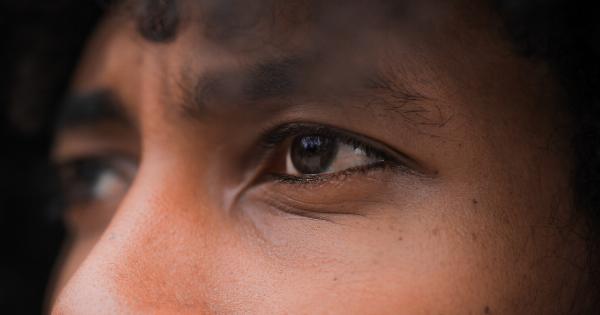Aging is a natural process that eventually affects us all.
However, have you ever wondered why some individuals seem to age faster than their peers? While genetics and lifestyle choices play a significant role in the aging process, there is also an underlying disorder that accelerates aging. This disorder, known as progeria, can have a profound impact on those affected and their families. In this article, we will explore what progeria is, its symptoms, causes, and potential treatments.
Understanding Progeria: What Is It?
Progeria, also referred to as Hutchinson-Gilford Progeria Syndrome (HGPS), is an extremely rare genetic disorder that causes accelerated aging in children.
The word “progeria” is derived from the Greek terms “pro” meaning “before,” and “geras” meaning “old age.” This disorder is characterized by the rapid appearance of aging signs such as hair loss, wrinkled skin, joint stiffness, and cardiovascular problems.
The Symptoms of Progeria: Signs of Premature Aging
Children with progeria usually appear healthy at birth. However, within the first year or two of their lives, the symptoms of accelerated aging start to become apparent. Some of the common symptoms of progeria include:.
1. Growth failure: Children with progeria experience slow growth and fail to gain weight at the expected rate.
2. Baldness and hair loss: Loss of hair, including the eyebrows and eyelashes, is a common characteristic of progeria.
3. Wrinkled and aged skin: The skin of individuals with progeria becomes thin, wrinkled, and old-looking, even in early childhood.
4. Stiff joints and limited mobility: Progeria causes joint stiffness, leading to limited mobility and difficulties with activities such as walking or bending.
5. Cardiovascular problems: The majority of children with progeria develop cardiovascular issues, including heart diseases and high blood pressure.
The Causes of Progeria: Genetic Mutations
Progeria is caused by a genetic mutation that occurs randomly and is not typically inherited from the parents.
This mutation affects the LMNA gene, which controls the production of lamin A protein, essential for maintaining the structure and stability of a cell’s nucleus. The mutated LMNA gene leads to the production of an abnormal form of lamin A, known as progerin, which accumulates in the cells.
Progerin disrupts the normal functioning of the cells and causes them to age prematurely.
The presence of progerin affects various aspects of cellular function, including DNA repair, cell division, and metabolism, leading to the characteristic features of progeria.
Diagnosis and Treatment: Living with Progeria
Diagnosing progeria can be a challenging task, as its symptoms might initially resemble other conditions associated with aging. However, specialized tests, such as genetic testing and evaluation of the LMNA gene, can confirm the presence of progeria.
Early diagnosis is crucial to ensure appropriate management and support for the affected child and their family.
Currently, there is no cure for progeria. However, a multidisciplinary approach involving a team of healthcare professionals can help manage the symptoms and improve the quality of life for individuals with progeria. Treatment options may include:.
1. Medications: Certain medications can help manage specific symptoms, such as heart diseases and high blood pressure.
2. Physical therapy: Regular physical therapy sessions can enhance mobility, flexibility, and joint function in individuals with progeria.
3. Assistive devices: The use of assistive devices like walkers or wheelchairs can provide support and improve independence for those with limited mobility.
4. Emotional and psychological support: Progeria can have a significant impact on the mental well-being of affected individuals and their families.
Psychological support and counseling can help them cope with the challenges associated with the disorder.
Progeria Research: Towards a Future Cure
Although there is currently no cure for progeria, ongoing research offers hope for potential treatments. Scientists are investigating various approaches, including gene therapy, to correct the genetic mutation responsible for progeria.
Gene-editing technologies such as CRISPR-Cas9 hold promising possibilities for future interventions.
Furthermore, understanding progeria can provide valuable insights into the normal aging process. It has been found that the same protein, progerin, accumulates in cells of typically aging individuals, albeit at a much slower rate.
Studying progeria may contribute to advancements in anti-aging research and the development of therapies to promote healthy aging.
Raising Awareness and Support
Progeria remains a little-known disorder due to its rarity. However, raising awareness about progeria is crucial for early diagnosis and ongoing research.
Support organizations such as the Progeria Research Foundation play a vital role in funding scientific studies, providing support to affected families, and advocating for increased awareness and understanding of this disorder.
In Conclusion
Progeria is a rare genetic disorder that accelerates the aging process in children. It manifests through various symptoms, including growth failure, hair loss, wrinkled skin, and cardiovascular problems.
The disorder is caused by a genetic mutation in the LMNA gene, leading to the production of progerin, an abnormal protein that disrupts cellular function.
There is currently no cure for progeria, but various treatments and interventions can help manage symptoms and improve the quality of life for affected individuals.
Ongoing research holds promise for future therapies and contributes to our understanding of the aging process.






























